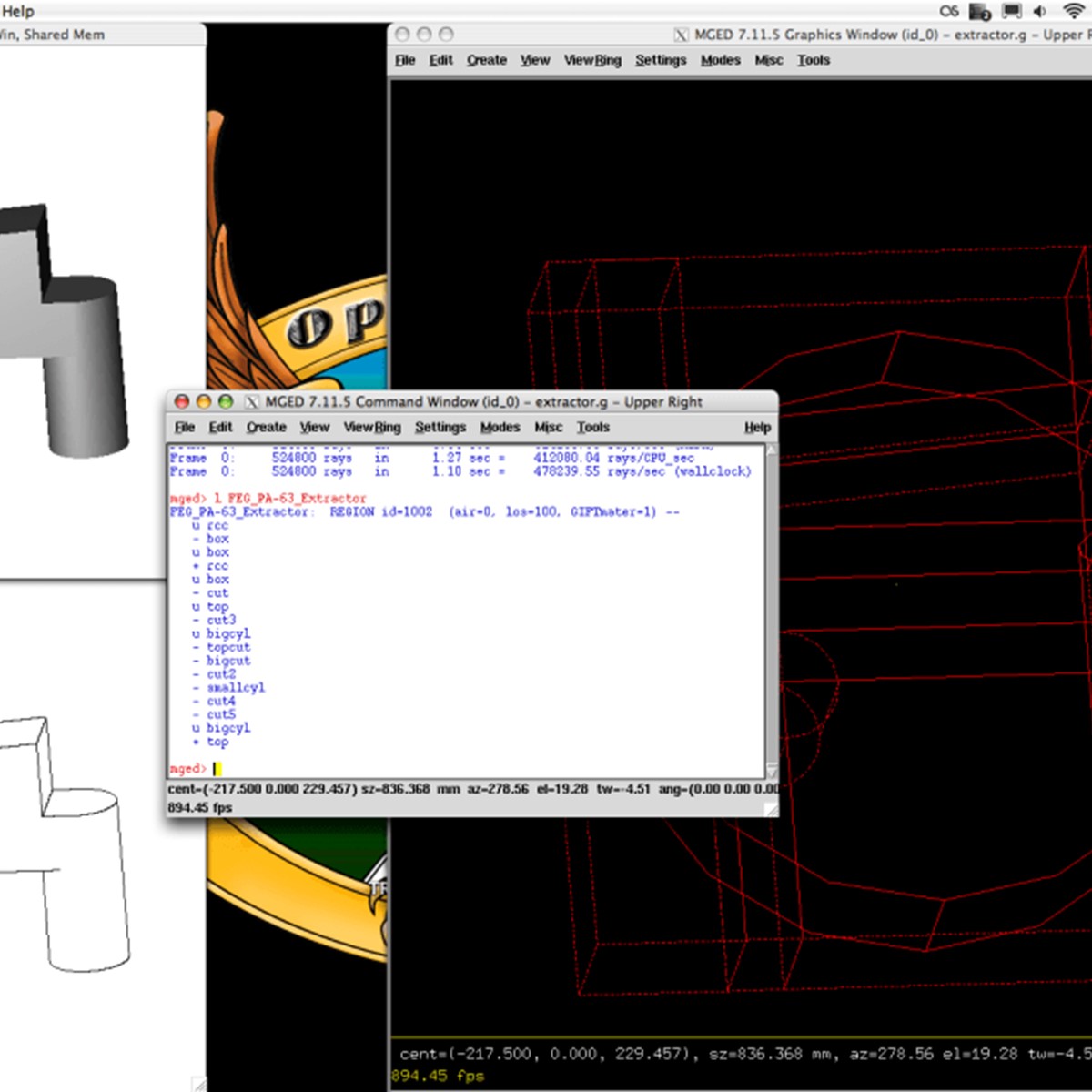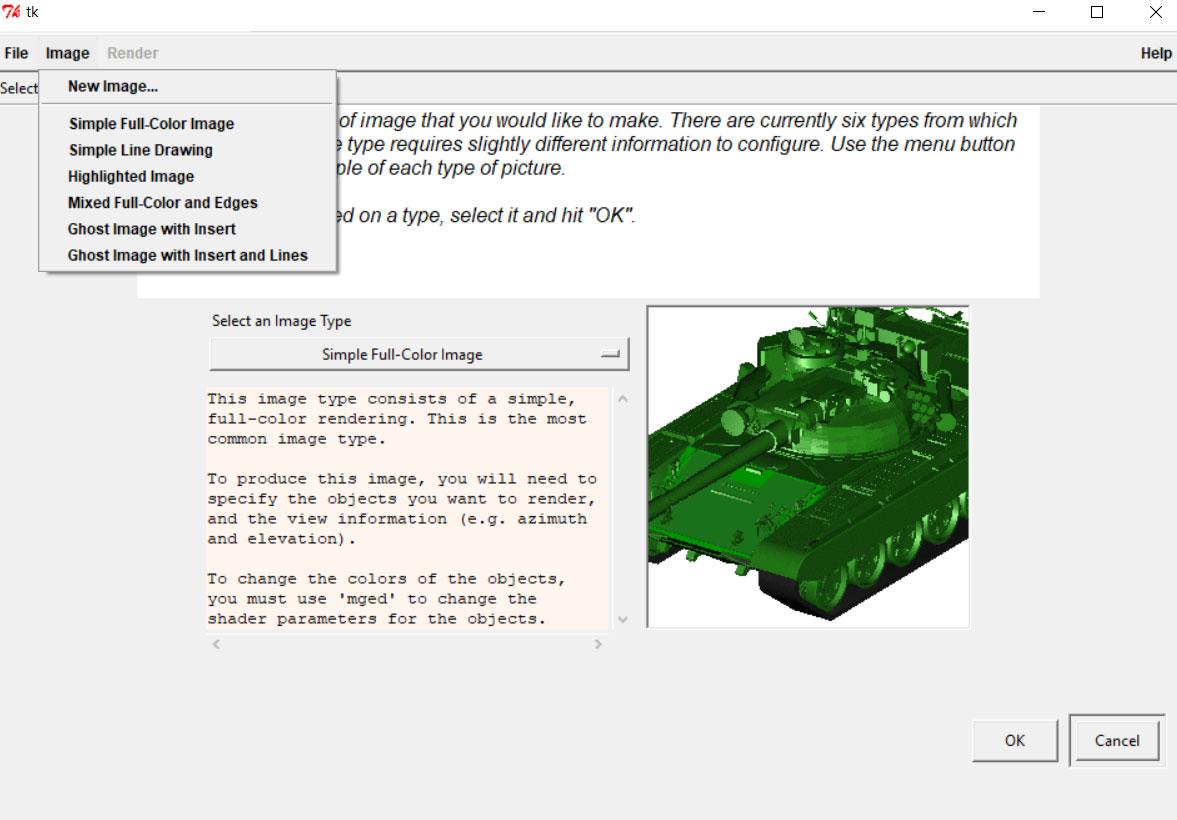

This model was created by students new to BRL-CAD in the span of about 2 weeks, starting from actual measurements in a museum. Shown is a 3D model of a Goliath tracked mine, a German-engineered remote controlled vehicle used during World War II. Solid modeling is distinguished from other forms of geometric modeling by an emphasis on being physically accurate, fully describing 3D space.

Solid GeometryīRL-CAD focuses on solid modeling CAD. Let's take a quick look at just some of the high-level features provided by BRL-CAD. One strength of a solid modeling system with integrated high-performance rendering is the ability to showcase some of those features graphically.
Brl cad file format code#
Even if it doesn't do exactly what you need, you have the source code and can contribute improvements back and collaborate with an existing community to help implement what you need.BRL-CAD has thousands of distinct features that have been developed over a number of decades. Focusing on any one of those involves various tradeoffs (simplicity, solidity, analytic guarantees, flexibility, etc).Īs mentioned regarding BRL-CAD, it's a large open source solid modeling system that has a lot of functionality in many areas you could leverage, about a dozen libraries of functionality and more than 400 succinct tools (two dozen or so being geometry converters). That sphere could be encoded as a simple point and radius (with no explicit surface information, an implicit form common with CSG usage), it could be a polygonal mesh (lossy BREP facets mesh format), it could be a spline surface (BREP NURBS), it could be volumetric (think CT scan data), and more. In particular for the two prevalent international standards (IGES and STEP), they are excessively complex to support as they can contain the same solid geometry encoded in numerous ways. Preserving solidity with topological guarantees is important for producing valid analyses, but rarely addressed by simple mesh formats. Your intuition that learning a given format would be difficult to understand and implement support for is quite true, particularly when dealing with solid geometry formats intended for analysis purposes. Your best bet is to work with an existing open source CAD system, such as BRL-CAD, that includes support for numerous importers and exporters. These were multiplied several times over if we had to read the file format ourselves - such as for DXF or VRML. There were always edge cases and nuances of the format that caused headaches. My task was greatly helped by the fact that the modellers we supported came with API's that let us read the model meshes directly and from there it was a relatively straightforward (but never easy) task to convert their mesh into ours. One of my jobs was the reading of models from various sources into my company's data structure. You might be better off adopting an existing format. Once you have a reader you'll need to convert the data to your internal format - not a trivial task. I'd recommend starting with Wikipedia - it will have some articles on 3D graphics and there should be plenty of links to further reading and tools/libraries. You'd be better off searching for the current crop yourself. I don't know which ones are still active as it's 5+ years since I was heavily involved in 3D graphics. There are libraries and tools for reading the various file formats. The particular format will depend on what the modeller is designed to do.

Solid models can be represented in a number of ways, either by Constructional Solid Geometry (CSG) where the shape is made up from the addition or subtraction of solid primitives from each other, or by Boundary Representation (B-Rep) where the edges are stored, or by triangulated faces (as used by 3D Studio MAX, WPF and many others) and so on. The DXF reference is complicated, but is just a reference - you need to know the concepts before you can understand what it represents. DXF, IGES and STEP are all data transfer formats.ĭXF is owned by Autodesk but is published so other companies can use it to read and write models. They did offer a file reading/writing library if memory serves, but I don't know what the state of that is now. DWG is Autodesk's file format and they don't (well didn't) encourage people to read it directly. Most CAD system datafiles are propriety (unless they've all moved over to XML in the few years I've been out of the industry!). To import solid bodies you first need to export them from the CAD system.


 0 kommentar(er)
0 kommentar(er)
